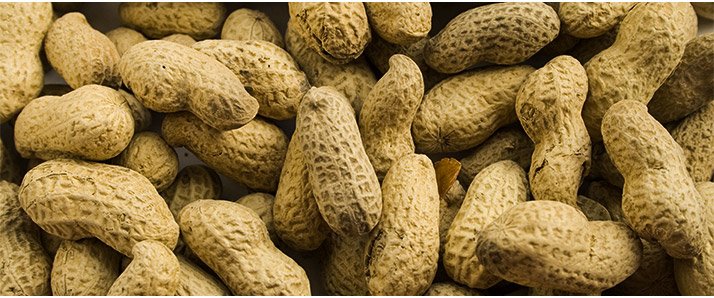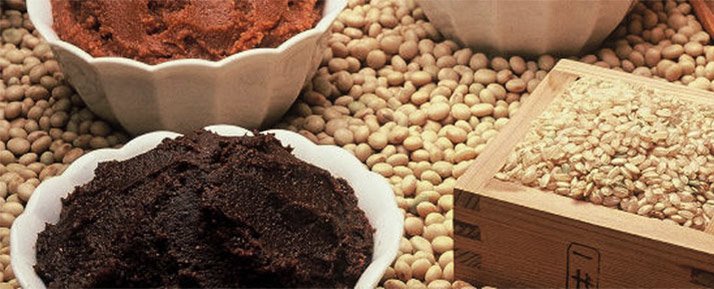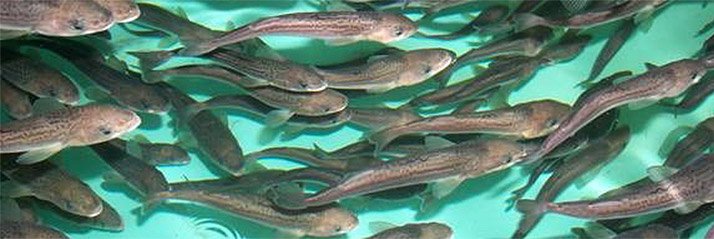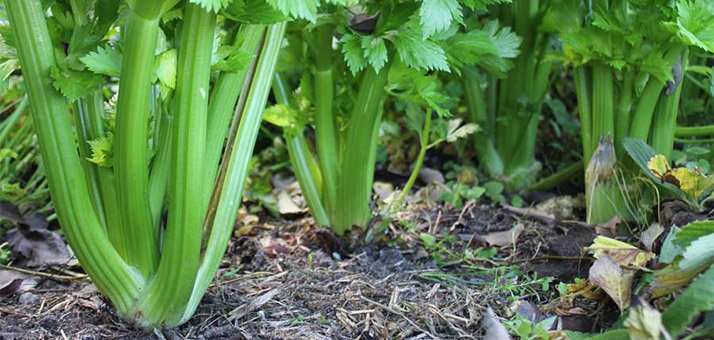
5 Amazing Fit Foods You've Never Heard Of
Rather than consistently limiting your exposure to different flavors and nutrients, try adding these 5 nutritious foods into your daily arsenal!
If you're training diet has become as predictable as a Jason Statham movie, it might be time to infuse your eating plan with some new flavors. Branching away occasionally from staples like chicken and oatmeal can bring about a number of important benefits.
Being stuck in a rut often results in drastic intervention—you know how the so-called mid-life-crisis stories go. The same applies to your diet. Eating the same thing every day can become quite dull, quickly. Switching up your staples will not only reduce the likelihood of a dietary meltdown in which you befriend every local fast-food delivery person, but can also protect against body-fat gain.1
Eating a greater variety of nutritious foods may make it easier to stick to a healthier diet over time, resulting in better weight control and other health outcomes. Widening the scope of the foods you eat can help you net a greater diversity of essential nutrients needed to support optimal health and physique transformation.
Begin your journey of eating on the wild side with these 5 newfangled foods!
Peanut Flour
How it's made: Peanut flour is formed by grinding roasted peanuts into a paste, then pressing out most of the oil to leave behind a low-carb powdery substance. Compared to traditional all-purpose flour, you'll go nuts for peanut flour after reading more about the nutrients within.
Nutrition perk: This gluten-free flour is low in fat calories but still a good source of protein, fiber, vitamin E, and iron. In fact, a mere quarter-cup serving provides only 3 grams of fat. So if you're a bit more conscious of your fat intake at the moment, peanut flour provides an excellent boost of nuttiness without the excess calories.

Need to know: Once opened, peanut flour should be refrigerated to maintain its freshness. It can also be stashed in the freezer for up to six months.
How to use it: Stir peanut flour into your morning oatmeal or whiz it into post-training shakes for an extra dose of nuttiness and protein. You can also incorporate it into pancake or waffle batter. If a recipe calls for 1 cup of regular flour, try swapping out half of it for peanut flour. You could also try it as a coating for chicken cutlets or as a replacement for breadcrumbs when making meatloaf and meatballs.
Miso
How it's made: Miso is a traditional Japanese condiment produced by grinding soybeans (and sometimes grains like barley) into a paste, adding salt and koji (a starter enzyme that breaks down proteins), and then allowing it to ferment over a number of weeks. It's usually dissolved in water to create a flavorful broth.
Nutrition perk: Similar to other fermented products such as yogurt and sauerkraut, miso contains beneficial bacteria called probiotics. Once consumed, the bacteria in miso can take up residence in our digestive tract. A growing pile of research suggests this may positively affect digestive health, immune function, and blood lipid levels.2-4

Need to know: Some brands of miso are heat-treated, which will lay waste to beneficial bacteria. To guarantee your fermented paste is still home to the good-for-you bugs, look for the words "unpasteurized" or "raw" on labels. It's also important not to boil miso, as the high heat can kill off the probiotics.
How to use it: Perhaps the easiest way to incorporate miso into you daily diet is via salad dressings. Simply whisk it with some olive oil and vinegar to help breathe new life into a boring bowl of greens. If you're looking for a milder flavor, stick will mellow-tasting yellow miso, rather than robust red miso.
A touch of miso can also crank up the umami flavor in mashed potatoes, roasted vegetables, dipping sauces, and meat marinades. It works well as a killer glaze for fish like salmon or sablefish.
Sablefish
How it's made: You'll find sablefish, also referred to as black cod, swimming in the icy waters of the north Pacific Ocean.
Nutrition perk: Sablefish flesh is rich in mega-healthy omega-3 fats like those found in salmon and sardines. Beyond supporting hearth health, omega-3 fats can help promote weight loss, especially when paired with an aerobic-exercise program.5-7

Need to know: A high oil content means sablefish does not have a long shelf life, so it's not always easy to find a fresh catch. However, ask your fishmonger for frozen cuts, which are also of high quality.
How to use it: Similar to other white-fleshed fish like halibut and tilapia, sablefish fillets can be steamed, broiled, poached, seared in a skillet, or tossed on the grill. It's ready to embrace all sorts of salsas, glazes, marinades, and spice rubs.
Teff
How it's made: One of the world's smallest grains, malty-nutty-tasting teff contains higher levels of iron than other commonly consumed grains. Iron helps transfer oxygen to working muscles via red blood cells to generate energy for muscular contractions. A British study found that athletes who consumed bread made with teff (versus bread without) had improved iron status at the study's conclusion.8 In just six weeks, subjects improved their iron levels 172 percent by substituting a teff-based bread for their usual daily bread intake (2-6 slices per day).
Nutrition perk: Teff is a worthy source of fat-fighting dietary fiber and a range of must-have nutrients like B vitamins, magnesium, manganese, and phosphorus.

Need to know: As with quinoa and rice, teff is naturally gluten-free, making it a good whole-grain option for those avoiding gluten.
How to use it: Teff releases its starch during cooking to create a thick mixture. This can be exploited to make puddings, riffs on polenta, or breakfast porridge similar in consistency of Cream of Wheat. Teff flour can also be used in all sorts of applications like pancakes, waffles, muffins, and cookies.
Celery Root
How it's made: Also called celeriac, this ugly duckling of the vegetable world has a potato-like texture and tastes like a cross between celery and parsley.
Nutrition perk: What celery root lacks in aesthetics, it makes up for with hefty amounts of vitamin K, which plays a major role in blood clotting.9

Need to know: Celery root's frumpy exterior must be peeled generously with a sharp knife prior to eating. Choose small-to-medium roots that are firm, heavy for their size, and free of soft spots. As a root vegetable, celery root is also a way for paleo followers to obtain some carbohydrates to fuel their workouts.
How to use it: You can eat celery root raw or cooked. Grate peeled celery root and add it to salads and slaws, or slice it into matchsticks and toss into stir-fry. For a riff on mashed potatoes, steam and mash celery root with some butter, fresh herbs, and black pepper. It also works well in puréed soups or mixed with other hearty vegetables and roasted.
References
- Vadiveloo, M., Dixon, L. B., Mijanovich, T., Elbel, B., & Parekh, N. (2015). Dietary variety is inversely associated with body adiposity among US adults using a novel food diversity index. The Journal of Nutrition, 145(3), 555-563.
- Haywood, B. A., Black, K. E., Baker, D., McGarvey, J., Healey, P., & Brown, R. C. (2014). Probiotic supplementation reduces the duration and incidence of infections but not severity in elite rugby union players. Journal of Science and Medicine in Sport, 17(4), 356-360.
- King, S., Glanville, J., Sanders, M. E., Fitzgerald, A., & Varley, D. (2014). Effectiveness of probiotics on the duration of illness in healthy children and adults who develop common acute respiratory infectious conditions: a systematic review and meta-analysis. British Journal of Nutrition, 112(01), 41-54.
- Guida, S., & Venema, K. (2015). Gut microbiota and obesity: Involvement of the adipose tissue. Journal of Functional Foods, 14, 407-423.
- Riccardi, G., Giacco, R., & Rivellese, A. A. (2004). Dietary fat, insulin sensitivity and the metabolic syndrome. Clinical Nutrition, 23(4), 447-456.
- Vaughan, R. A., Garcia-Smith, R., Bisoffi, M., Conn, C. A., & Trujillo, K. A. (2012). Conjugated linoleic acid or omega 3 fatty acids increase mitochondrial biosynthesis and metabolism in skeletal muscle cells. Lipids in Health and Disease, 11(142), 2090-2098.
- Hill, A. M., Buckley, J. D., Murphy, K. J., & Howe, P. R. (2007). Combining fish-oil supplements with regular aerobic exercise improves body composition and cardiovascular disease risk factors. The American Journal of Clinical Nutrition, 85(5), 1267-1274.
- Alaunyte, I., Stojceska, V., Plunkett, A., & Derbyshire, E. (2014). Dietary iron intervention using a staple food product for improvement of iron status in female runners. Journal of the International Society of Sports Nutrition, 11(1), 50.
- Juanola-Falgarona, M., Salas-Salvadó, J., Martínez-González, M. Á., Corella, D., Estruch, R., Ros, E., ... & Lapetra, J. (2014). Dietary intake of vitamin K is inversely associated with mortality risk. The Journal of Nutrition, 144(5), 743-750.
